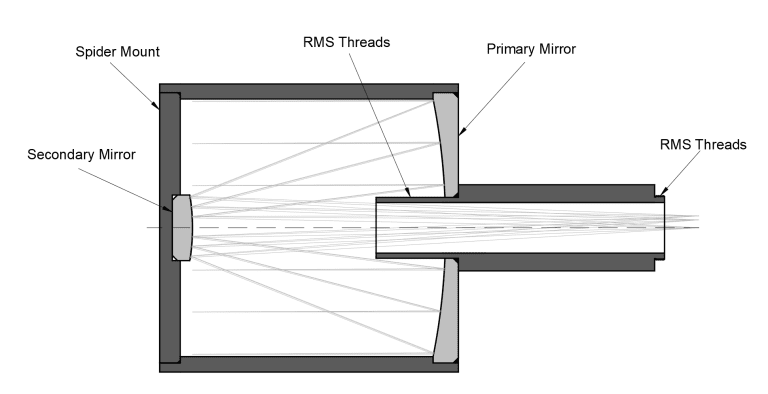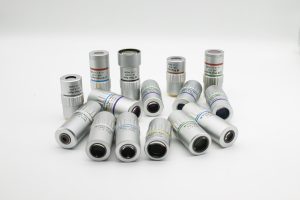Key Takeaways:
- Reflective microscope objectives are revolutionary in optical design, addressing challenges such as chromatic aberration and enabling diffraction-limited performance across a wide wavelength range.
- Their mirror-based construction reduces chromatic aberration and extends working distances, while maintaining stability and precision through uniform thermal coefficients.
- The two-mirror Schwarzschild objective exemplifies meticulous alignment for optimal performance. These objectives cover a broad wavelength spectrum, from deep-ultraviolet to far-infrared, proving vital in scientific, industrial, and astronomical applications.
- With spot sizes as small as 1 µm, they excel in high-resolution imaging tasks across fields such as biomedicine, nanotechnology, and optics research.
Advancements in Reflective Microscope Objectives
In the realm of optical instrument design, reflective microscope objectives represent a groundbreaking approach, conquering chromatic aberration and achieving diffraction-limited performance across a vast wavelength range. Unlike their refractive counterparts, reflective objectives rely on meticulously crafted mirror constructions to manipulate light. This leads to notable advantages such as reduced chromatic aberration and extended working distances.

Focal Length and Stability
The design of reflective objectives intricately links their focal length with considerations for the refractive index of the materials used. Utilizing a single material with a uniform thermal coefficient of expansion ensures these objectives maintain stability under varying environmental conditions, guaranteeing consistent performance over time. The precision engineering of corrected reflective objectives, featuring nickel spherical mirrors coated with aluminum and magnesium fluoride, exemplifies this meticulous approach.
Wavelength Range
The wavelength range covered by reflective objectives spans from deep-ultraviolet to far-infrared. It showcases their versatility in capturing images across different spectral regions. This broad range is especially valuable in scientific and industrial applications where precise imaging is crucial.
Design Principle
In terms of design, the two-mirror Schwarzschild objective is a notable example, featuring meticulous alignment of its primary mirror and secondary mirrors to achieve optimal performance. The reflective objective’s construction, including the integration of a spider assembly for the secondary mirror, plays a critical role in maintaining diffraction-limited performance and minimizing aberrations.
High Resolution and Precision
The spot sizes achieved with reflective objectives, such as 2 µm for the 15X objective and 1 µm for the 36X objective. They underscore their ability to produce detailed and high-resolution images. These objectives excel in tasks requiring fine detail and precision, making them indispensable tools in microscopy and related fields
Applications
Reflective microscope objectives find applications across a wide range of fields due to their unique design and capabilities, including diffraction-limited performance, chromatic correction, and suitability for various imaging and focusing tasks. Here are some examples of their applications:
- Astronomy: Achieves diffraction-limited performance and chromatic correction for precise celestial imaging.
- Biomedical Imaging: Essential for focused and chromatically corrected imaging of cellular structures.
- Nanotechnology: Analyzes nanostructures with high detail using reflective objective design.
- Industrial Inspection: Ensures accurate imaging for quality control and inspection tasks.
- Semiconductor Metrology: Utilizes reflective objectives for focused measurement and imaging.
- Fluorescence Microscopy: Captures accurate fluorescence signals in life sciences research.
- Optics Research: Versatile for precise imaging and focusing applications in various setups.
The diverse applications of reflective microscope objectives underscore their importance in scientific research, and industrial and technological advancements across various disciplines. They have the ability to provide diffraction-limited performance, chromatic correction, and flexibility in imaging and focusing tasks. It makes them indispensable tools in modern microscopy and optical systems.
Conclusion
Reflective objectives represent a significant advancement in optical technology, offering enhanced performance in resolution, chromatic correction, and working distances. Their unique design principles contribute to diffraction-limited performance.
This makes them indispensable components in modern microscope systems.
GREAT ARTICLE!
Share this article to gain insights from your connections!





